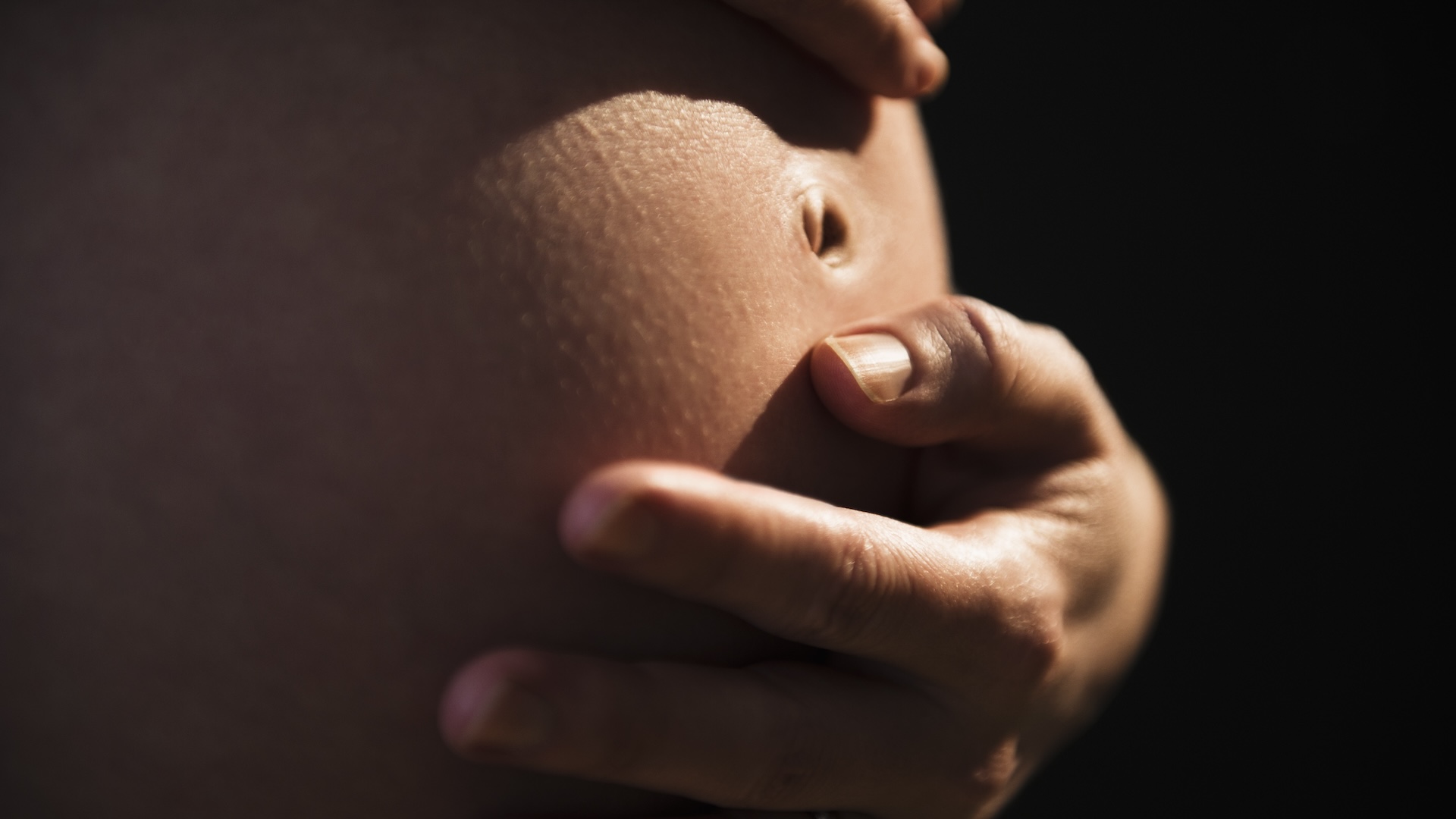When you purchase through contact on our site , we may earn an affiliate commission . Here ’s how it works .
mother with high levels of dental memorial tablet can go cavity - promoting yeast to their newborns and infants , a new discipline suggests .
The yeast , calledCandida albicans , is find in the back talk of many sizeable babies , but it can fiddle a role in tooth decay in former puerility — a condition sleep together assevere other childhood caries . In summation , the fungus can have a mouth contagion in infants calledoral thrush .

The new study highlights how maternal oral health might have ripple effects on the oral health of children.
Because of these potential wellness effects , researchers investigatedC. albicansin the mouths of mothers and their materialisation , to see if there ’s a link . Their report , published Jan. 17 in the journalPLOS One , suggest that mothers with a gravid accumulation of dental memorial tablet are eight times more likely to authorise the barm to their babe than mother with less memorial tablet on their tooth .
Although infant also find fault upC. albicansfrom other sources , not just their mothers , the study emphasizes a potential connexion between a female parent ’s oral health and their issue ’s , study first authorNaemah Alkhars , a researcher from Kuwait University also analyze at University of Rochester School of Medicine and Dentistry , told Live Science in an e-mail .
relate : How does memorial tablet causal agency cavities ?

Is oral health transmissible?
For the fresh study , researchers took unwritten samples from 160 mothers and their shaver between 2017 and 2020 . Samples were collected over the course of eight visit , which were conducted during pregnancy , at the clock time of birth and then up to when the tike turned 2 geezerhood old . The scientists sequenced the genomes of organism in the sample distribution to identify the fungi .
In all , 93 , or about 58 % , of the mother - child dyad hadC. albicansin their samples . There were high levels ofC. albicansin children subsequently in their life compared with birthing , Alkhars mark .
Notably , 94 % of the mothers and child withC. albicansin their rima oris carry strain that were highly genetically relate , suggest that mothers toy a function in transmitting the fungus kingdom to their children .

To see how unwritten health factor in in , the researchers used a scale to gauge how much plaque mothers had accumulated on their tooth ; the scale rate plaque buildup from 0 to 3 . They bump that women who scored 2 or high on the scale were eight times more likely to transferC. albicansto their babies than those with lower score .
The research worker did n’t investigate exactly how the barm transportation , but hypothesis suggest that sister may be unwrap during delivery , skin - to - skin tangency or potentially while feeding , they wrote in their report . This finding suggest that mothers should study the effects of their unwritten wellness on their kid and invite even plaque removal , or dental scaling , from a dental practitioner , Alkhars said .
It ’s improbable that mothers maintain better unwritten wellness would completely prevent their baby from carryingC. albicans , saidBastiaan Krom , a molecular microbiologist and prof at the Academic Centre for Dentistry Amsterdam who was n’t involved in the study . However , this cadence could help oneself prevent the yeast from causing disease by reducing the amount of barm buildup in their mouths , he told Live Science in an electronic mail .

In addition to plaque accumulation , the researchers look at other ways in which baby might pick upC. albicans . The infants who try out positive for the yeast were more likely to have been fed with a bottle at night when they were 2 month older , while those without the fungus were more likely to have been exclusively breastfed at 12 and 18 month .
A few other constituent — such as a baby ’s wash and whether they look day care — also seemed to influence the likeliness of a child carryingC. albicans . This suggests that moms are n’t the only possible source of the barm , but does n’t reveal which sources are most influential .
— What causes toothache ?

— Baby born with itty , bitty tooth … which a dentist right away pulled
— Are teeth considered clappers ?
Alkhars noted that the researcher still have n’t clarify when to step in to forbid the onset of early childhood tooth decay . next research will involve following up on the children as they maturate , to see how theirC. albicanslevels change and whether they break tooth decay .

This article is for informational purposes only and is not meant to bid medical advice .
Ever wonder whysome people ramp up musculus more easy than othersorwhy lentigo follow out in the sun ? Send us your question about how the human body works tocommunity@livescience.comwith the subject line " Health Desk Q , " and you may see your interrogative sentence answered on the site !









